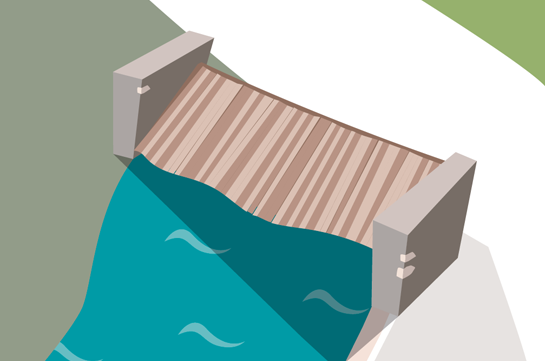
7. DAM: Wooden dam from the 16th century
The presentation of the dam is accompanied by an explanation of its use:
- In Igartza they used the water brought from the Oria river to move the mills and power the forges that were located there. Water was also brought from the Oria by means of a dam to obtain the necessary hydraulic energy. The water that accumulated there was directed by means of a channel to the water tanks of the mill and the forge.
- Over time, many dams have been built in the channel of the Oria river to provide water for the Igartza complex.
- The last dam was built in the 17th century; it was made of stone and stood for almost 300 years, until it was demolished in 1982, both because of the danger of the flooding of the Oria and because of the noise it made
When the dam disappeared, the flow of the river grew, and the upper layers of sediments also began to disappear. This erosive process accelerated with the floods of August 1983 and a few metres higher up a wooden dam became visible in the mud. In 1987, a group from the Aranzadi Science Society carried out archaeological excavations, and placed the pieces of the wooden dam in premises belonging to the municipal sports centre.
- After the explanation, we will see, by means of a video, the research carried out by the Aranzadi Science Society, followed by the video of the construction of the Igartza dam:
- The dam rescued from the river has a gigantic structure:
- It is composed of large beams, stretching the 20 metres from one bank of the river to the other.
- The beams were placed on top of each other in a series of steps, and joined together by means of wooden pins, above the level of the river, until the dam reached a height of 4 metres.
- The interior of the structure was filled with pebbles and sand. The front of the dam, upstream, forms an inclined plane.
- It is covered by crushed boarding, joined to the structure by means of nails.
- It is a unique example of this form of engineering in wood, since there is no other dam of this type on display to the public in all of Europe.
